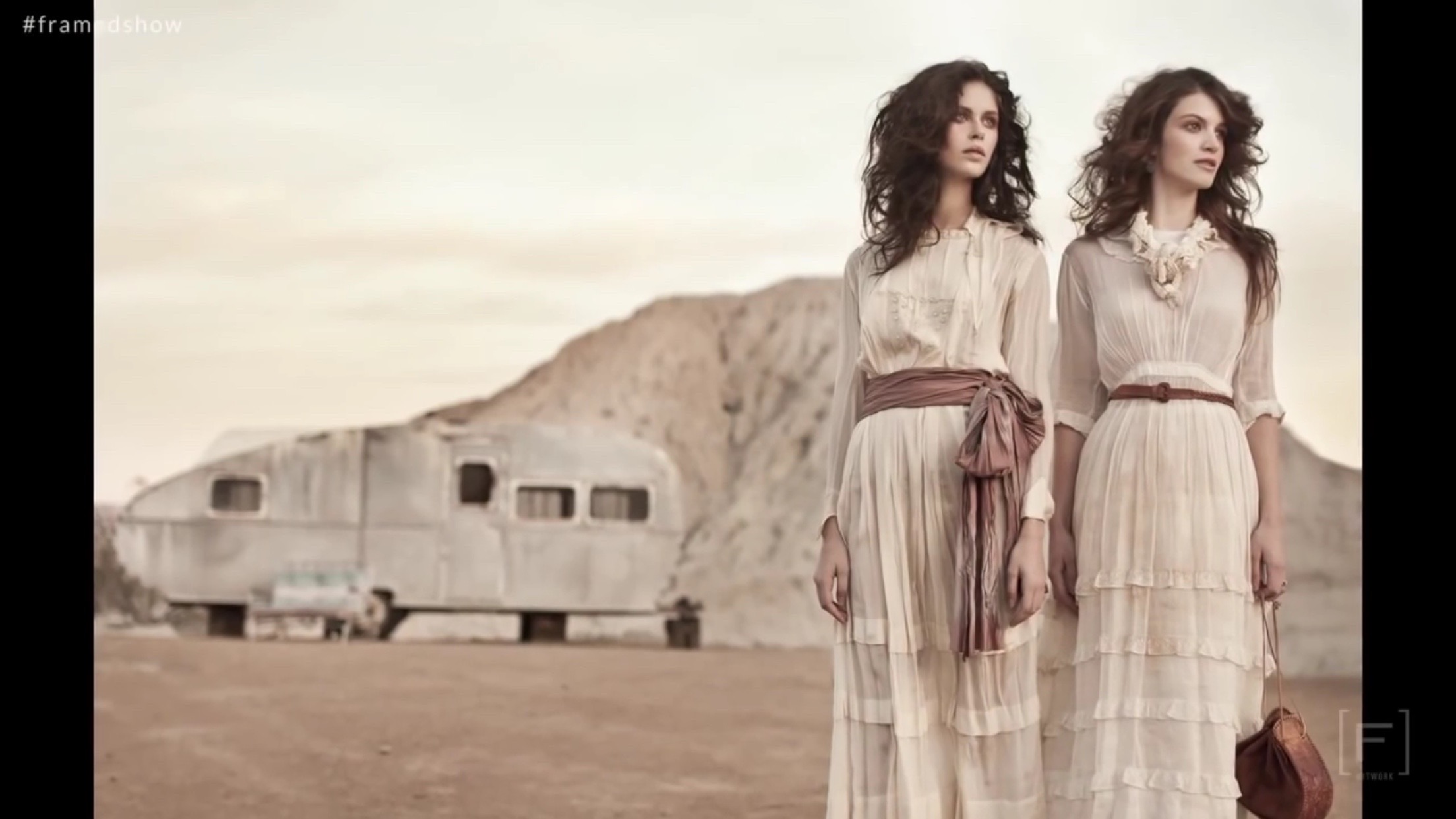Using some reasonable assumptions, geometry, and a bit of math, we can put actual constraints on the composition.
- Measure the height of the trailer door as a percentage of the total height of the image. I get about 250 pixels (out of 1292 total), or right around 20%, or 1/5 of the image height.
- Assume that if the camera were aimed down slightly, the models would the vertical height of the frame (that is, if the top of their heads touched the frame, their feet would be just touching the bottom).
- Thus, 5 door heights (at its distance from the camera) fill the vertical frame, as do 1 model height (at their distance from the camera).
- Define the models' heights HM, distance to the models DM, height of the trailer door HT, and distance to the trailer DT.
- With the assumption in #2, and the similar triangles that result from #3, the following ratios are equal: HM / DM = 5 HT / DT.
Rearranging the equation in #5, we get: DT = DM * (5 HT / HM).
Now, let's make 2 more assumptions:
- The door height HT is 6 ft (1.83 m). This is a fairly typical door height for a travel trailer.
- The models are 5 ft 5 in (1.65 m). This is somewhat arbitrary; I used the average height for US women listed at Wikipedia.
Plugging those numbers into our rearranged equation, we get that the trailer is about 5.5 times farther from the camera than the models are.
Okay, we have relative distances now, but what about actual distances? Those are dependent upon focal length. Again using similar triangles, the ratio of sensor height (HS) to focal length (ƒ) should be the same as model height to distance to the models (again, using the assumption that the models fill the entire frame height). In maths terms: HS / ƒ = HM / DM. Rearranging to solve for DM, we get: DM = ƒ * HM / HS
Assuming a full-frame camera, the sensor height HS = 24 mm. Picking a focal length of, say, 70 mm, we should be about 4.8 m (16 ft) from the models, and the trailer should be about 26 m (87 ft) away.
I tried searching for the make of the trailer in the picture to get actual dimensions. While I couldn't identify the make or model of the trailer, with some lucky Googling, I managed to identify the actual trailer used in the photo. This trailer is located here. Using the excellent The Photographer's Transit application on my phone, here are approximate shot layouts at 100mm and at 70mm (on a full-frame camera).


Using very rough estimation, I set up the shot so that the trailer is slightly less than half the width of the field of view, just at the left edge of the field of view.
Based on the cars/debris at the edge of the field of view, I think Lyndsey Adler's shot was less than 100mm.
Note that errors in the estimations we made (especially in eyeballing the camera and subject placement in Photo Transit) can have a big impact on the exact final comparison; however, this rough back-of-the-envelope calculation shows how some simple geometry and maths can yield a decent starting point in setting up your composition. (And, also, with some Google-fu and maybe blind luck, you can actually decompose a researched composition).




